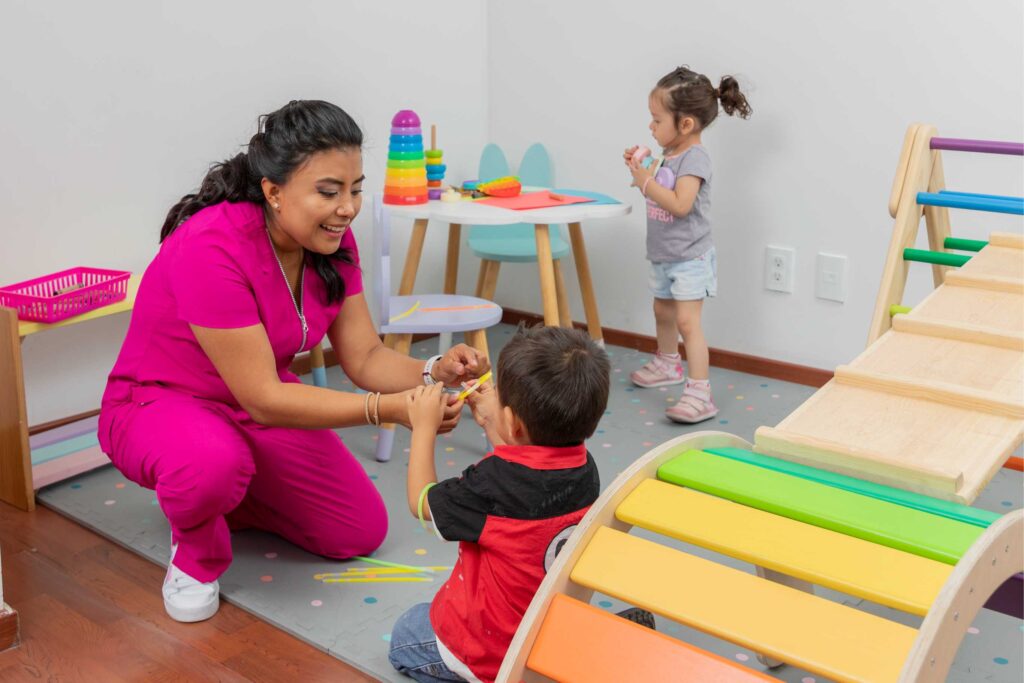Caring for a newborn can be both a joyous and challenging experience for parents. From sleepless nights to constant worry about safety, every moment feels crucial. Parents often wonder how they can provide the best environment for their child while ensuring no risk is taken. Effective baby care starts from understanding the essential needs of your little one and implementing practical strategies at home. One significant concern is the correct approach to newborn sitting, ensuring your baby develops safely while staying comfortable. This guide will help parents navigate the complexities of newborn care while maintaining a secure home environment.
Understanding the Basics of Baby Care at Home
Proper baby care encompasses more than just feeding and diapering. It involves creating a nurturing, safe, and stimulating environment. Every aspect, from sleeping arrangements to hygiene, can impact a baby’s growth and development. Parents should focus on:
- Safe Sleeping Practices: Babies should always sleep on their backs in a crib with a firm mattress and no loose bedding to prevent risks such as suffocation or sudden infant death syndrome (SIDS).
- Feeding Essentials: Whether breastfeeding or formula feeding, maintaining a consistent schedule and ensuring the correct positioning can prevent digestive issues and enhance bonding.
- Hygiene and Skin Care: Regular bathing, diaper changes, and using gentle products are critical to prevent infections and skin irritations.
By addressing these basics, parents can establish a strong foundation for their baby’s health and comfort.
Safe Practices for Newborn Sitting
One of the first milestones for babies is developing the ability to sit. While it’s exciting to see a baby try to sit independently, parents need to ensure that this process is safe and gradual. Here are some key points:
Start with Supported Sitting
Newborns do not have the neck or back strength to sit upright on their own. Parents should:
- Use supportive pillows or specialized baby seats.
- Always supervise the baby when attempting to sit.
- Avoid placing the baby in high chairs or elevated surfaces until they can sit without assistance.
Encourage Floor Time
Placing your baby on the floor provides a safe space for movement and strengthens muscles:
- Lay a soft, firm mat on the floor.
- Sit with the baby to provide support and prevent falls.
- Encourage reaching and grasping toys to enhance motor skills.
Avoid Forcing Milestones
Each baby develops at their own pace. Trying to force a newborn sitting position can lead to injuries. Instead, allow the baby to progress naturally while offering plenty of tummy time, which strengthens neck and back muscles essential for sitting independently.
Creating a Baby-Safe Home Environment
Safety at home goes beyond baby-proofing. It’s about anticipating risks and removing hazards. Parents can implement the following strategies:
Baby-Proofing Essentials
- Install safety gates near stairs or hazardous areas.
- Cover electrical outlets and secure cords.
- Keep small objects, sharp items, and chemicals out of reach.
Safe Sleep and Rest Areas
- Ensure cribs and bassinets meet safety standards.
- Remove pillows, blankets, and toys from sleeping areas.
- Maintain a comfortable room temperature to prevent overheating.
Monitoring and Supervision
Even with a safe environment, constant supervision is key:
- Use baby monitors to keep track of sleeping or playing babies.
- Never leave a baby unattended on elevated surfaces.
- Encourage supervised interaction with pets and older children.
Nutrition and Feeding Tips for Optimal Baby Care
Feeding is not just about nourishment; it’s a moment to bond and observe your baby’s health.
Breastfeeding and Bottle Feeding
- Follow a consistent feeding schedule suitable for the baby’s age and weight.
- Ensure proper latching during breastfeeding to prevent discomfort.
- Use sterilized bottles and nipples for formula feeding.
Introducing Solids
- Wait until the baby is around 6 months old before introducing solid foods.
- Start with simple, single-ingredient foods to monitor allergies.
- Encourage self-feeding gradually, which helps develop hand-eye coordination.
Hydration and Vitamins
- Breast milk or formula provides sufficient hydration in the first months.
- Consult a pediatrician about vitamin supplements if necessary.
Essential Hygiene Practices for Baby Care
Hygiene plays a crucial role in protecting your baby from infections and skin irritations.
Bathing and Skin Care
- Use lukewarm water and gentle, fragrance-free baby soaps.
- Avoid over-bathing; 2–3 times a week is sufficient for newborns.
- Moisturize the baby’s skin with suitable baby lotions to prevent dryness.
Diapering and Clothing
- Change diapers promptly to prevent rashes.
- Choose breathable, soft fabrics for clothing.
- Wash baby clothes separately using gentle detergents.
Hand Hygiene
- Wash hands thoroughly before handling the baby.
- Encourage older siblings and visitors to follow proper handwashing.
Supporting Physical and Cognitive Development
Beyond physical care, babies need mental stimulation and interaction to thrive.
Tummy Time and Exercise
- Tummy time helps strengthen neck, shoulder, and arm muscles.
- Start with a few minutes several times a day and gradually increase.
- Encourage reaching, rolling, and other movements to promote motor skills.
Sensory and Cognitive Stimulation
- Engage the baby with soft toys, mirrors, and textures.
- Talk, sing, and read to your baby to enhance language skills.
- Limit screen exposure and prioritize real-life interaction.
Social Interaction
- Encourage gentle play with parents and caregivers.
- Introduce the baby to safe social settings to develop emotional and social skills.
- Respond promptly to cries to build trust and security.
Managing Sleep Schedules and Routines
A predictable sleep routine is crucial for both the baby and parents’ well-being.
Establishing a Sleep Schedule
- Observe your baby’s natural sleep cues.
- Maintain consistent nap and bedtime routines.
- Ensure a dark, quiet, and comfortable sleeping environment.
Handling Sleep Challenges
- Address sleep disruptions calmly and consistently.
- Avoid letting the baby sleep with adults on soft surfaces.
- Seek professional advice if sleep issues persist.
Safety Tips for Common Baby Care Scenarios
Even everyday activities require caution to ensure safety.
Bathing Safety
- Never leave a baby unattended in the bath.
- Use non-slip mats and keep water at a safe temperature.
- Keep all bathing supplies within arm’s reach.
Car and Stroller Safety
- Use car seats approved for infants and follow proper installation guidelines.
- Ensure strollers have safety harnesses and brakes.
- Avoid leaving the baby unattended in strollers or cars.
Handling Visitors and Illness Prevention
- Limit exposure to sick visitors.
- Practice proper hygiene to prevent infections.
- Monitor your baby for any signs of illness and consult a pediatrician promptly.
Emotional Well-being for Parents and Baby
The emotional health of parents directly affects baby care quality.
Managing Stress and Fatigue
- Take breaks and seek support from family or caregivers.
- Share responsibilities to prevent burnout.
- Prioritize self-care to maintain patience and emotional stability.
Bonding with the Baby
- Engage in skin-to-skin contact to build trust and attachment.
- Respond consistently to cries and needs.
- Play, sing, and interact to foster emotional and cognitive development.
Using Technology Wisely in Baby Care
Modern technology can assist parents but should be used carefully.
- Baby monitors can help track sleep but should not replace supervision.
- Apps for feeding and sleep schedules can provide helpful insights.
- Avoid over-reliance on gadgets; prioritize hands-on care and attention.
Common Mistakes to Avoid in Home Baby Care
Parents can sometimes unknowingly compromise safety or development. Common pitfalls include:
- Placing babies on elevated surfaces without supervision.
- Using outdated or unsafe baby gear.
- Ignoring early signs of illness or developmental delays.
- Overstimulation with toys, screens, or loud noises.
Avoiding these mistakes ensures a safer and more nurturing environment for your baby.
Wrapping Up
Ensuring the best baby care at home without compromising safety requires a combination of vigilance, knowledge, and practical strategies. From proper newborn sitting techniques to safe sleep, hygiene, nutrition, and emotional well-being, every detail contributes to the baby’s growth and security. By creating a safe and supportive environment, parents can foster a healthy, happy, and thriving baby while also protecting their own well-being. Regular monitoring, gradual skill development, and maintaining routines are key to providing comprehensive care that nurtures both body and mind.
With consistent effort, attention, and love, parents can confidently navigate the challenges of home baby care, ensuring their child enjoys a secure and nurturing start in life.



